Architectural Weathered Steel Siding
The steel siding is widely used by professional building contractors and is often specified by architects. *Although it is correct to say that only US Steel can make Cor-Ten, many other steel mills make a similar product and the correct designation would be ASTM A588 (weathering plate) Cor-Ten is actually the trademarked named for a weathering steel developed by US Steel.
Cor-ten steel siding installation

On this page we bullet out the highlights from the how-to video. The video is a quick tutorial on how to install steel siding on to a shipping container conversion. This is a basic primer, outline for how to fasten most siding materials.

The weathered steel we chose is heavier than most available material siding. Weathered steel, often referred to as *(Cor-Ten). Corten develops a light rust layer that once formed, will protect the underlying material and prevent further corrosion. That is why we chose it for this InSoFast project we are hoping for a dramatic yet rustic finished shipping container.
Cutting Cor-ten steel siding

For cutting the metal panel use a 14-gauge swivel head shear or other appropriate cutting tools.
Attaching Cor-ten siding wit corrosion resistant fasteners

Attach the Cor-ten steel panel with corrosion resistant fasteners.
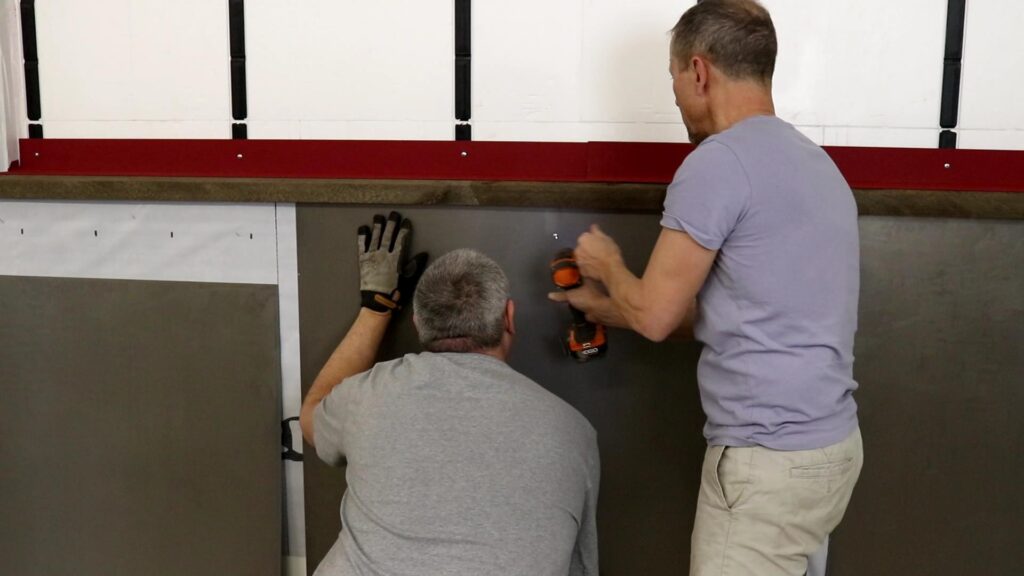
Follow the metal panel manufacturer’s recommended fastening space pattern. *See pull-out screw testing for technical weight and shear limitations.
Finishing details
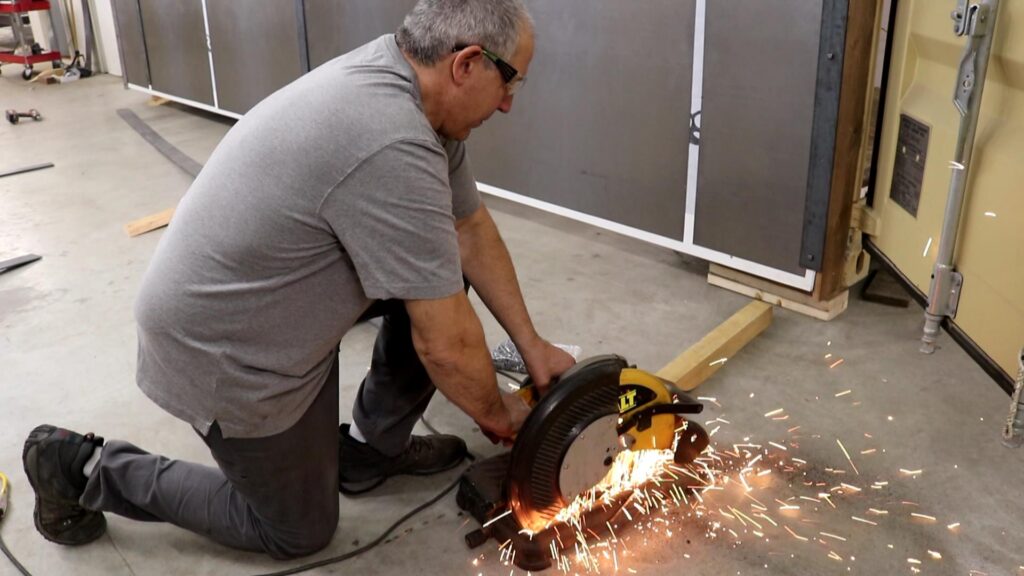
An aluminum oxide cut-off disc was used to trim the heavy gauge metal accent piece.
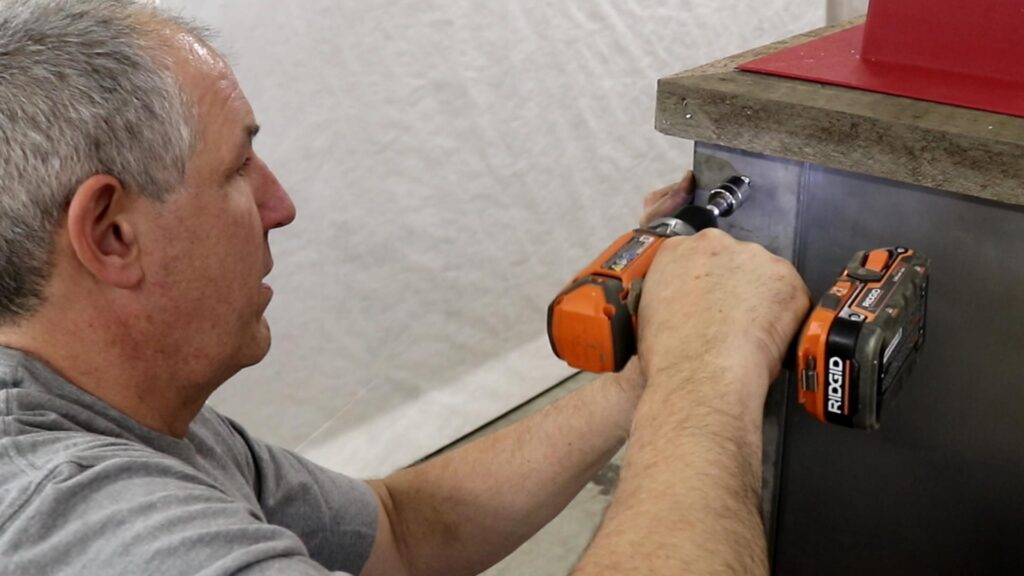
The 18′ long heavy gauge lower accent trim was pre-drilled to speed the trim’s application.

Also, it is best to pre-drill the heavy gauge vertical trim. A carpenter’s square was used to true the vertical accent pieces.
Board and Batten Siding
The use of board and batten siding demonstrates one of the many finishing choices you have when you insulate a shipping container. It is visually clean and crisp and will have a timeless look as it weathers. We chose it to complement the weathered steel on the lower portion of the shipping container.
Board and batten siding
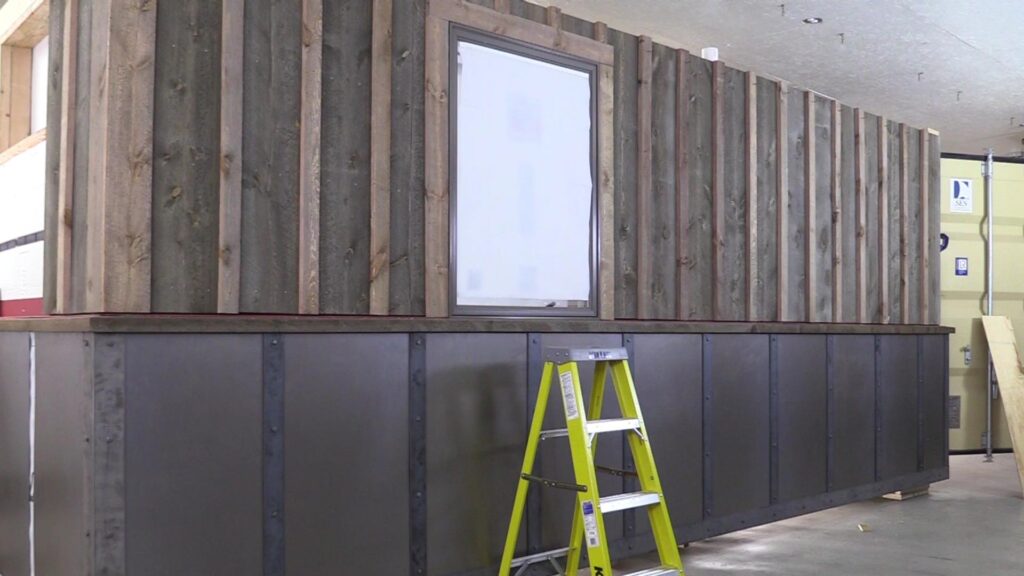
InSoFast stable insulation panel will work well with the board and batten siding’s natural expansion and contraction and the system and will be super durable. This application also demonstrates the placement of horizontal furring strips to facilitate the vertical siding application. The completed system as shown is a rain screen with the furring strip stand-off, that allows for air flow and drying of the board and batten siding.
Air sealing the insulation
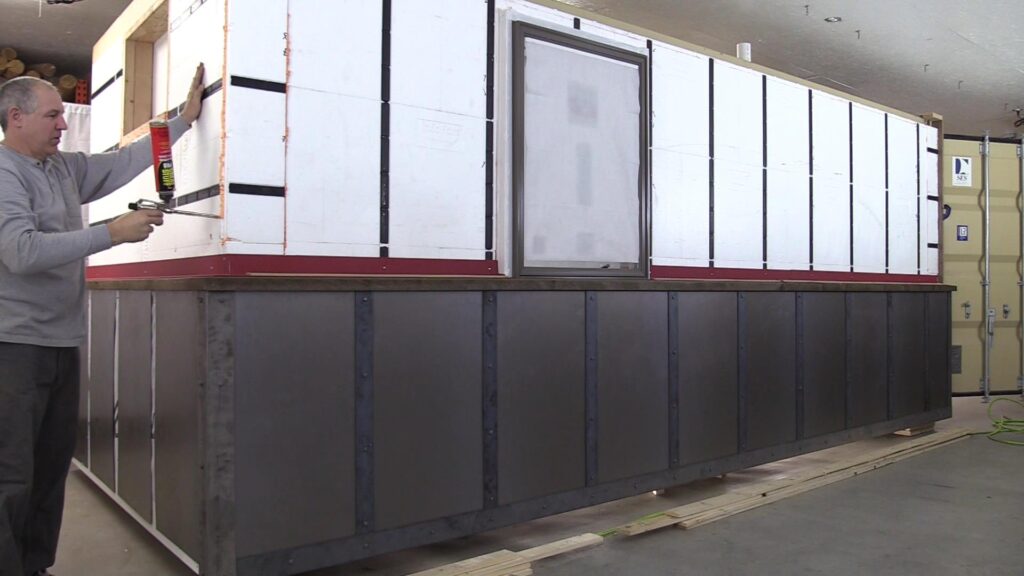
Begin by air sealing the steel container with spray foam to reduce cold spots and the possibility of hidden condensation.
Attachment for outside corners

For outside corners use a 25-gauge utility angle to provide solid attachment for the siding materials. See Utility Angle:
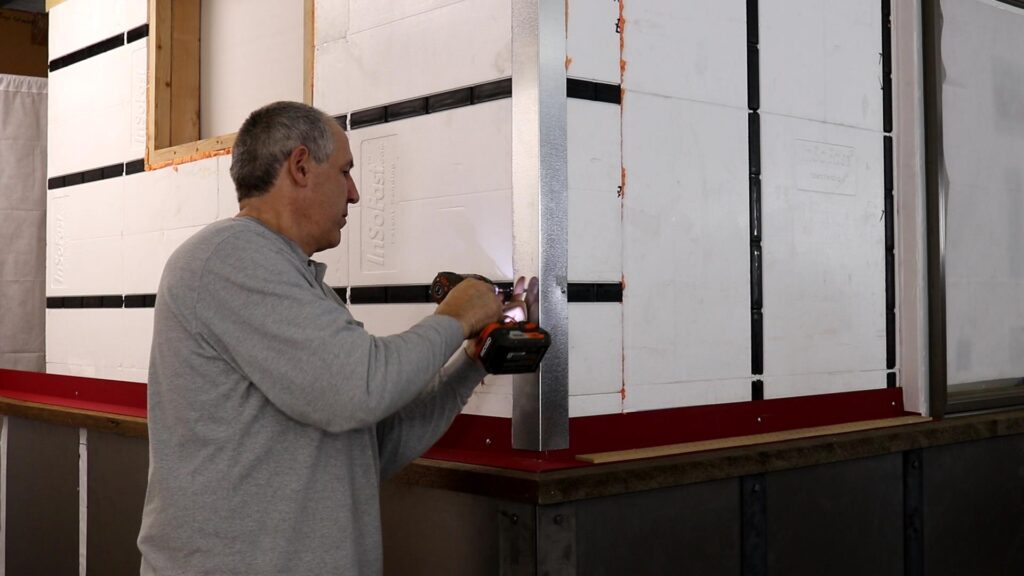
Screw attach the 25-gauge utility angle, note that the InSoFast studs run horizontally along the end wall.
Adding horizontal strapping
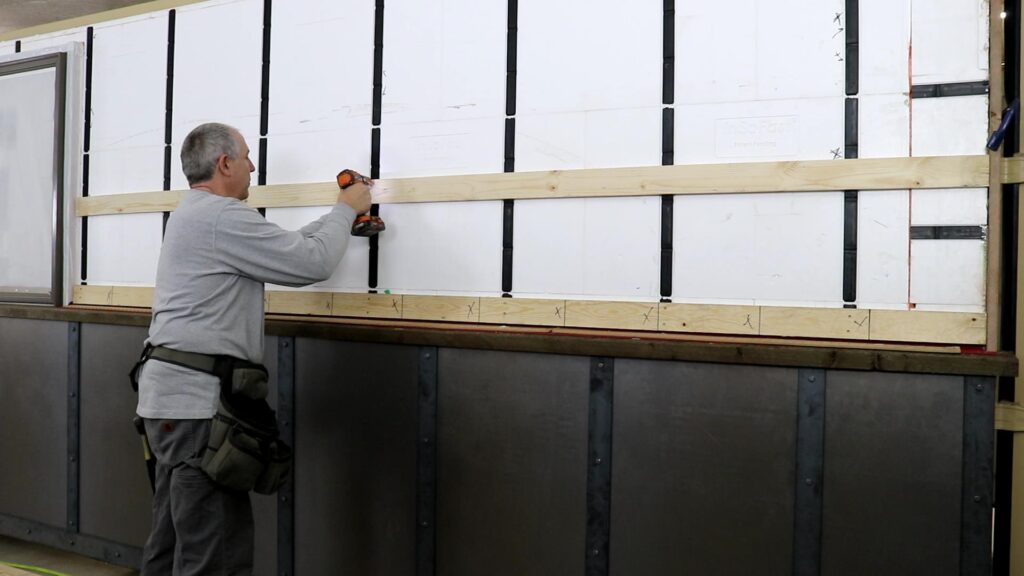
The CX44 panels studs run vertically every 22” on center. To attach vertical siding to vertical studs we installed horizontal furring strips 16″ on center.
Attaching the vertical barn wood siding
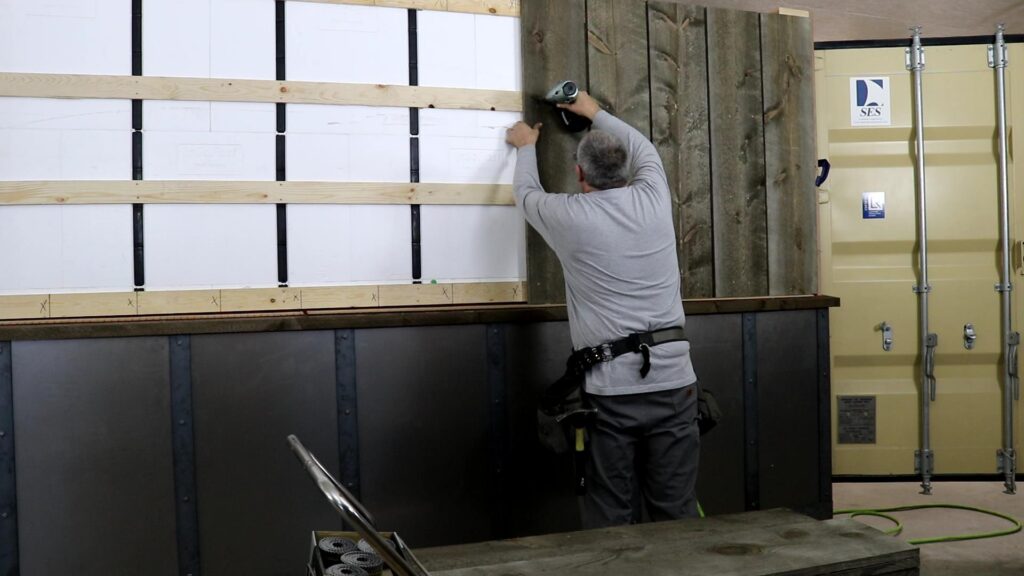
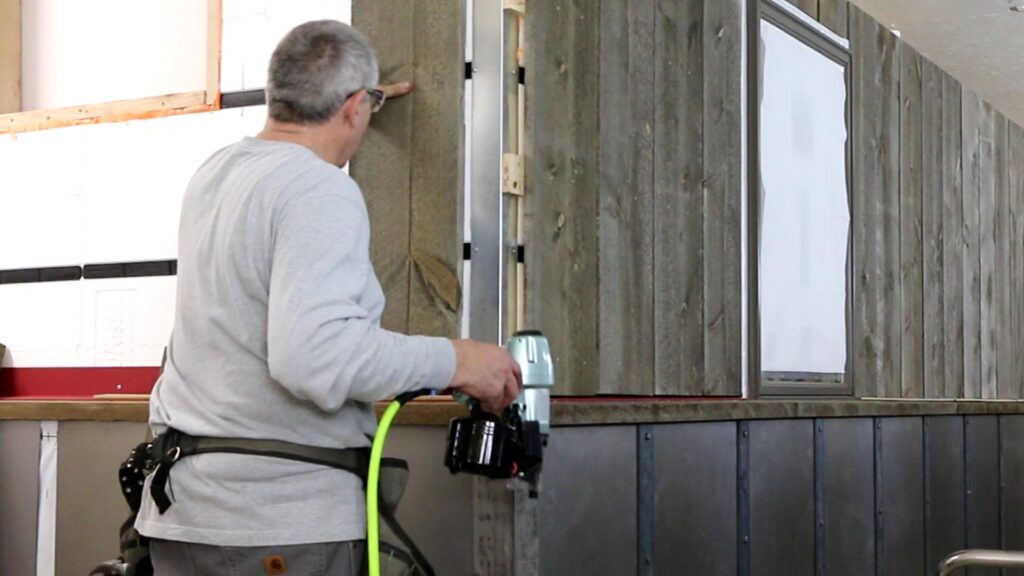
The bumped-out rain screen design added to the energy efficiency and durability to the natural wood siding.Use enough fasteners to properly secure the siding material to the wall.
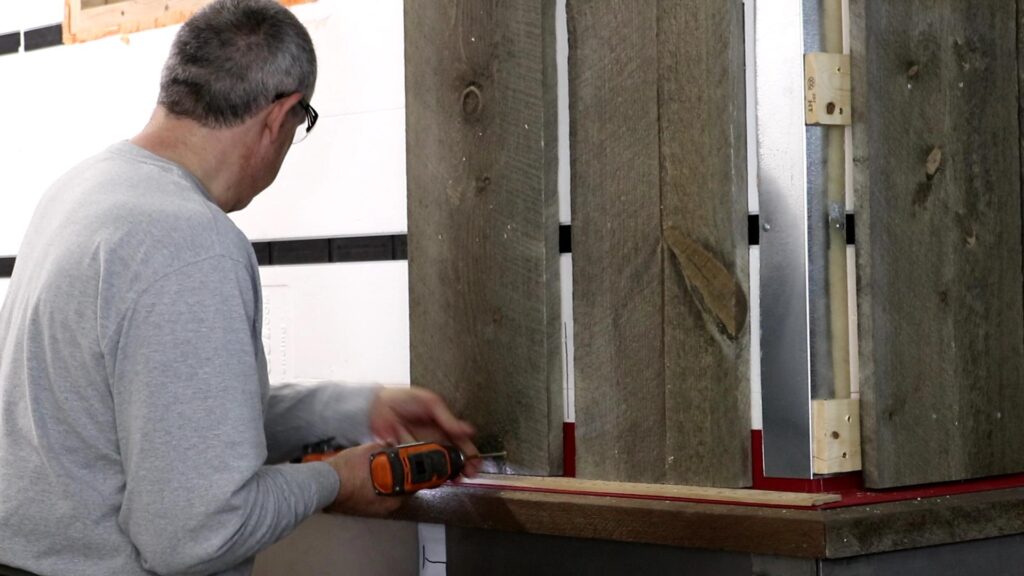
No furring strips are required when the InSoFast studs are horizontal. A temporary shim was placed on the red metal flashing to assure that the vertical siding’s cut edge will be able to dry.
Corner posts, and window trim
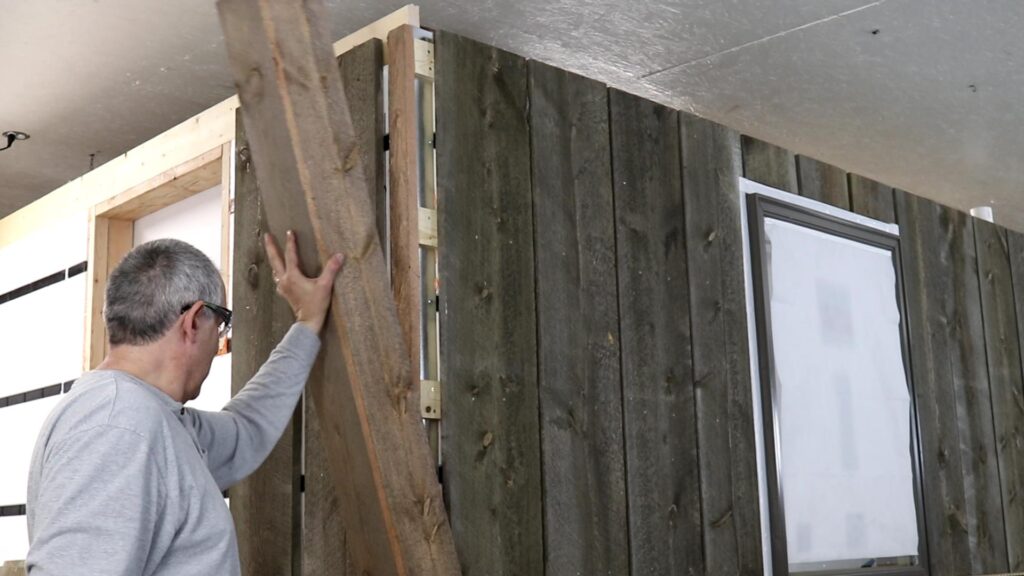

A decorative corner post was pre-nailed to finish the outside edge.
Finishing window trim was installed.
Vertical battens
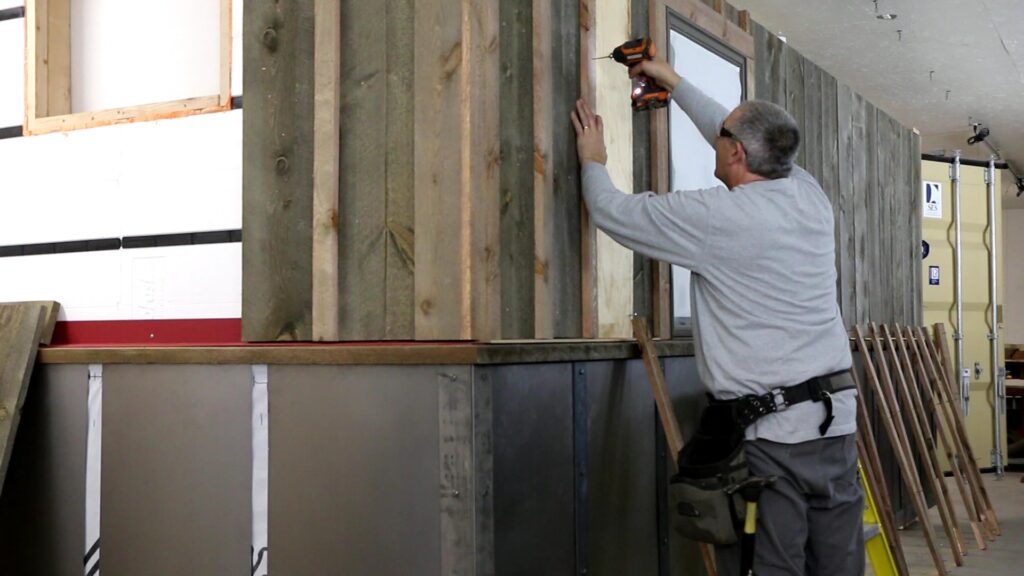
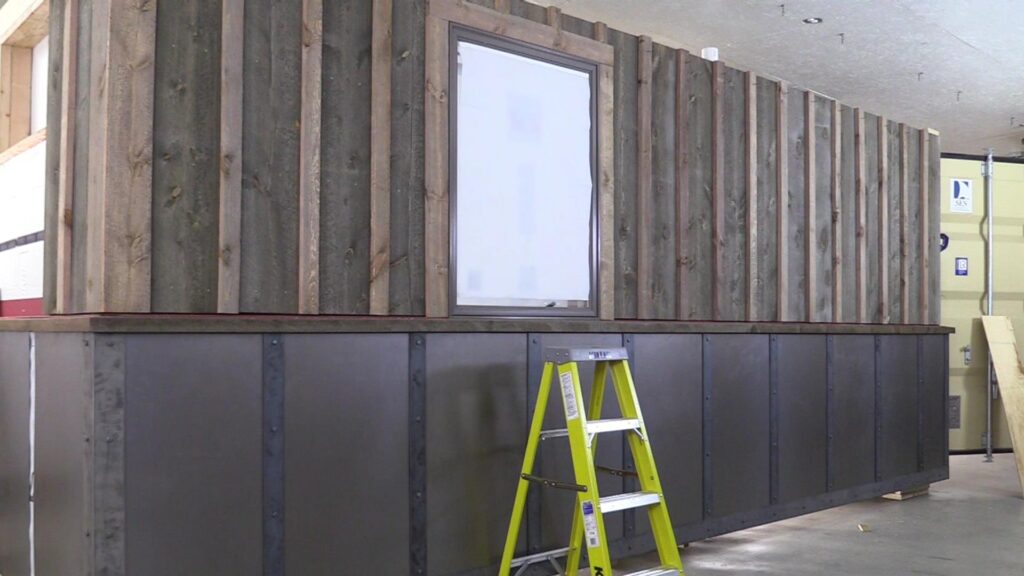
A pre-cut spacer was used to aid in the application of the vertical battens.


